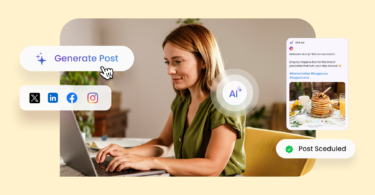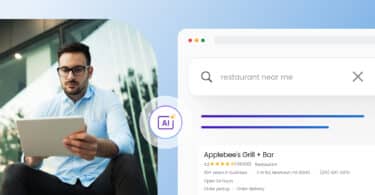In today’s digital media landscape, brand mentions are one of the most important indicators of how your brand is perceived by the public. Whether someone praises your product on social media, references your company in a news article, or discusses your service in a video review, all these mentions matter.
These organic mentions can influence your online reputation in ways advertising cannot. People trust other people’s opinions. What is said about your brand by customers, journalists, or influencers shapes how new audiences discover and evaluate your brand.
But tracking brand mentions isn’t just about listening, it’s about learning. Understanding where your brand stands, what people expect, and what they talk about can help you make informed decisions and seize new opportunities.
In this article, we will explain brand mentions, why they are valuable, where they happen, how to track them, and how to use that information effectively.
Table of contents
- What are brand mentions?
- Other different types of brand mentions & examples
- Why brand mentions matter in 2026
- How to effectively track brand mentions
- Tips for smarter brand mention tracking
- What’s next in brand monitoring and public relations
- Conclusion
- Frequently asked questions on brand mentions
- Turn brand mentions into growth opportunities with Birdeye Insights AI
What are brand mentions?
Brand mentions refer to any time a company, its products, or services are referenced online. These mentions provide valuable insights into how a brand is perceived and discussed in real-time. They can appear across a wide range of digital platforms, including social media, blogs, review sites, news articles, and online forums.
There are two types of brand mentions:
1. Direct brand mentions
A direct mention explicitly names the brand, product, or service. These are easy to identify and track using tools that scan for keywords or brand names.
Example: “I just bought a pair of running shoes from Nike, and they’re super comfortable!”
2. Indirect brand mentions
An indirect mention refers to the brand without explicitly naming it. This might happen through descriptions, nicknames, or references to a product or feature strongly associated with the brand.
Example: “These new running shoes feel like they were made for athletes. Just like the ones top Olympians wear.”
Whether the mentions are positive, negative, or neutral, monitoring both direct and indirect brand mentions is crucial. It allows businesses to understand public sentiment, track reputation better, respond to feedback, and identify new opportunities for engagement and improvement.
Other different types of brand mentions & examples
Brand mentions can take many forms across the digital landscape. Understanding the various types helps businesses monitor where and how their brand is being discussed. Here’s a closer look at the key categories:
1. Social media mentions
These are some of the most immediate and visible brand mentions:
- Direct brand mentions: When users tag or name a brand in posts, comments, or messages.
- Indirect brand mentions: When users refer to a brand’s products, services, or experiences without naming them explicitly.
- Hashtags: Brand-specific or related hashtags (e.g., #YourBrandName) used in posts to join conversations.
2. Blog and media coverage
Mentions in published content can significantly influence public perception:
- Reviews and opinions: Blog posts or articles that evaluate a brand’s products or services, either positively or negatively.
- News articles: Mentions in news coverage, press releases, or industry updates.
- Industry blogs: Bloggers may feature a brand in posts related to its niche or expertise.
3. Community discussions and forums
These are informal but influential spaces where users share authentic experiences:
- Online forums: Platforms like Quora or niche forums where users discuss and recommend brands.
- Reddit threads: Subreddits or discussion threads where brands and products are debated, praised, or critiqued.
4. Reviews and testimonials
Customer feedback offers valuable insight into satisfaction and product performance:
- Product reviews: Ratings and comments on e-commerce sites like Amazon, Yelp, or Google Reviews.
- Testimonials: Personal stories or endorsements shared on brand websites or social media.
5. Broadcast and audio mentions
These mentions reach audiences through traditional and digital broadcasting:
- TV and radio: Mentions during shows, interviews, or advertisements.
- Podcasts: Brands may be referenced or reviewed during episodes or sponsored segments.
6. Influencer content and branded media
Content creators can expand brand visibility through their platforms:
- Influencer posts: Sponsored or organic content featuring product use, reviews, or brand partnerships.
- Branded content: Material created by the brand, such as blogs, videos, or social campaigns, to engage its audience.
Monitoring and responding to these various brand mentions is essential for maintaining a strong, informed, and responsive brand presence.
Why brand mentions matter in 2026
Brand mentions are not just random chatter; they reveal what customers think about your products and services. By analyzing these mentions carefully, you can unlock valuable insights that shape more innovative marketing, communication, and product strategies.
Here’s why tracking them is important:
Reputation management
What people say about your brand shows how it is perceived. Tracking brand mentions reveals whether that perception is positive, neutral, or negative. Responding to this in a timely and thoughtful way helps you maintain a balanced public brand image.
Customer perception and trust
When people talk about your brand, others listen. Mentions from real customers, especially unsolicited ones, build credibility. They show potential buyers what to expect based on actual experiences.
Social proof
If others are talking about your brand positively, new customers are more likely to consider you a trustworthy choice. Social proof influences behavior, especially in competitive industries.
Crisis management
Negative mentions can spread quickly. Monitoring and identifying brand mentions help you catch early signs of confusion, dissatisfaction, or misinformation. Taking action early allows you to correct issues before they grow.
Competitor analysis
Tracking brand mentions from competitors helps you understand where they stand. Are customers praising their features? Are they facing similar complaints? These valuable insights can inform your own strategy.
Helps track industry trends
Mentions also reflect broader shifts in your market. If a product type, feature, or concern is gaining attention, you will likely spot it through repeated themes in what people are saying.
Monitoring brand mentions gives you more than facts. It provides context, allowing you to make adjustments and communicate more clearly with your audience.
How to effectively track brand mentions
Monitoring brand mentions is just the beginning; the true value comes from interpreting that data.. Here’s how to systematically track and analyze brand mentions for meaningful insights:
Methods for tracking brand mentions
1. Social listening tools
Leverage automated tools that monitor conversations across social media, websites, forums, and news outlets. These platforms not only capture mentions but also offer real-time insights and analytics.
Automated monitoring tools track brand mentions across various online platforms like social media, reviews, blogs, and news sites, providing real-time alerts and centralized dashboards for easy management. Birdeye specializes in this by offering real-time insights and sentiment analysis to help businesses monitor and manage their brand perception effectively.
2. Manual monitoring
Search manually on key platforms using your brand name, common misspellings, hashtags, and product names. Though time-consuming, this approach allows for a more hands-on understanding of context.
- Social media platforms

Use built-in search features on platforms like Facebook, Instagram, LinkedIn, and X (formerly Twitter) to find posts, comments, or hashtags that mention your brand.
- Online forums, review sites, and communities
Explore discussions on forums and niche community platforms where your brand or products may be mentioned.
- Search engines
Use advanced search operators (e.g., site:example.com “your brand name”) to locate mentions on specific websites or across the broader web.
3. Google Alerts
Set up Google Alerts to receive notifications whenever your chosen keywords appear online. It’s a simple, cost-effective way to stay informed.
4. Variations matter
Track all variations of your brand—abbreviations, alternate spellings, related products—to ensure comprehensive coverage.
Analyzing mentions for insights
1. Sentiment analysis
Classify mentions by positive, neutral, or negative sentiment to gauge public perception and identify potential issues or opportunities.
Birdeye’s sentiment analysis automatically categorizes customer feedback as positive, negative, or neutral, helping businesses quickly gauge sentiment and identify areas for improvement to enhance reputation and customer experience.
2. Trend identification
Monitor recurring topics, hashtags, or spikes in activity to uncover what’s driving conversation around your brand or industry.
3. Influence tracking
Identify and evaluate individuals or sources driving engagement. Understanding who’s amplifying your brand helps prioritize outreach and partnership opportunities.
4. Campaign measurement
Analyze mentions tied to specific campaigns or events to evaluate impact and ROI. Look at both volume and sentiment for a full picture.
5. Reporting and visualization
Use reporting tools to create dashboards and visual summaries. These help you communicate findings and inform stakeholders efficiently.
Brand Mentions for SEO
Want to see the impact of Birdeye on your business? Watch the Free Demo Now.
6. Identify unlinked brand mentions
Not all brand mentions will include a direct link to your website. Using brand mention tools can help uncover these unlinked brand mentions, allowing you to reach out or request backlinks where appropriate.
7. Analyze and take action
Once mentions are identified, review the context and sentiment to assess overall brand perception. Engage with your audience by responding to feedback, resolving issues, and acknowledging comments.
Consistent monitoring and intelligent analysis transform mentions into strategic intelligence. When done right, this process empowers proactive brand management and more informed decision-making.
Tips for smarter brand mention tracking
To get the most out of your tracking process, apply these useful tips:
Track more than your name
Include product lines, founder names, event hashtags, and taglines. People may mention your brand without using the official name.
Understand the mood
A large number of mentions is not always a good sign. Understanding tone helps you separate attention from approval.
Track spelling variations for better coverage
Real users don’t always use official names. Watch for misspellings, nicknames, or shortened versions of your brand and products.
Include offline sources
Broadcast and print mentions can still influence customers. Make sure your tracking method includes both online and traditional platforms.
Tracking is not only about coverage but also about precision. These small steps improve the quality of insights you collect.
What’s next in brand monitoring and public relations
With the rapid shift in how audiences consume and share information, brand mentions are becoming more dynamic and complex. Staying ahead means adopting smarter monitoring tools and embracing faster, more proactive engagement strategies. Here’s what you need to know:
- Speech recognition: Mentions in podcasts and videos are now being picked up by tools that can scan spoken content.
- Sentiment accuracy: Technology is improving at recognizing emotional tone, even in sarcasm or mixed messages.
- Centralized monitoring: Many professionals now prefer tools that combine social, news, audio, and print mentions into a single view.
- Faster reactions: Public response times are shorter. Having a system in place allows you to reply to mentions before they escalate or fade away.
These developments will help brands understand what is being said and make informed choices about what to do next.
Conclusion
Brand mentions offer a clear picture of how people view your brand. They are useful for understanding customer satisfaction, identifying problems, learning what works, and keeping an eye on the competition.
By monitoring mentions consistently and analyzing them, you can respond to your audience with confidence and adjust your strategy with clarity.
Start paying attention to your mentions today and stay informed about what really matters to your customers.
Frequently asked questions on brand mentions
Brand mentions are references to your company, products, or services across online and offline platforms, either directly or indirectly.
Tracking mentions helps you understand public perception, manage reputation, and respond effectively to feedback or emerging issues.
You can use social listening tools like Birdeye, manual searches, and Google Alerts to track mentions on social media, websites, forums, and news outlets.
Analyzing mentions reveals sentiment, trends, influencer impact, and campaign effectiveness, helping you refine your marketing and communication strategies.
Turn brand mentions into growth opportunities with Birdeye Insights AI
Tracking brand mentions is just the start. Understanding what those mentions mean drives real business value, and that is where Birdeye Insights AI comes in.
Mentions from reviews, social media, surveys, or even forums contain valuable clues about how your brand is perceived. When you are getting hundreds or thousands of them across different platforms, it can be tough to keep up and find the patterns. Birdeye Insights AI does the heavy lifting for you.
Here is how Birdeye helps you make sense of your brand mentions:
Pulls mentions from everywhere
Birdeye captures data from reviews, surveys, and online listings to give you a full picture of what people are saying across all touchpoints.
Reveals the tone behind the talk
With advanced sentiment analysis, Birdeye helps you understand whether mentions are positive, negative, or neutral. This way, you are not just counting mentions, you are measuring perception.
Summarizes feedback with smart AI
There is no need to read every mention. Birdeye provides quick AI-generated summaries that highlight key themes, pain points, and praise, helping you act faster.
Benchmark your brand
Compare how your mentions stack up against competitors or across locations using Birdeye Score, Sentiment Score, and Reputation Score. This helps you spot strengths, fix weak spots, and maintain consistency.
Sun Auto leveraged Birdeye Insights AI to monitor customer experience across locations with the Birdeye Score. Sentiment and Reputation Scores revealed customer perception and trust, while the Listings Score ensured accurate, SEO-friendly business info. Together, these insights helped boost consistency and performance across the brand.

Delivers improvement recommendations
Receive actionable AI suggestions based on trends in your mentions. Whether it is responding faster to negative feedback or improving service at a specific location, Birdeye guides your next steps.
Visualizes trends over time
Track shifts in sentiment, brand reputation, and customer concerns through interactive dashboards that make your mentions data easy to understand and share.
Whether it is a 5-star review, a Reddit thread, or an untagged comment on social media, Birdeye helps you listen, learn, and lead.

Originally published









